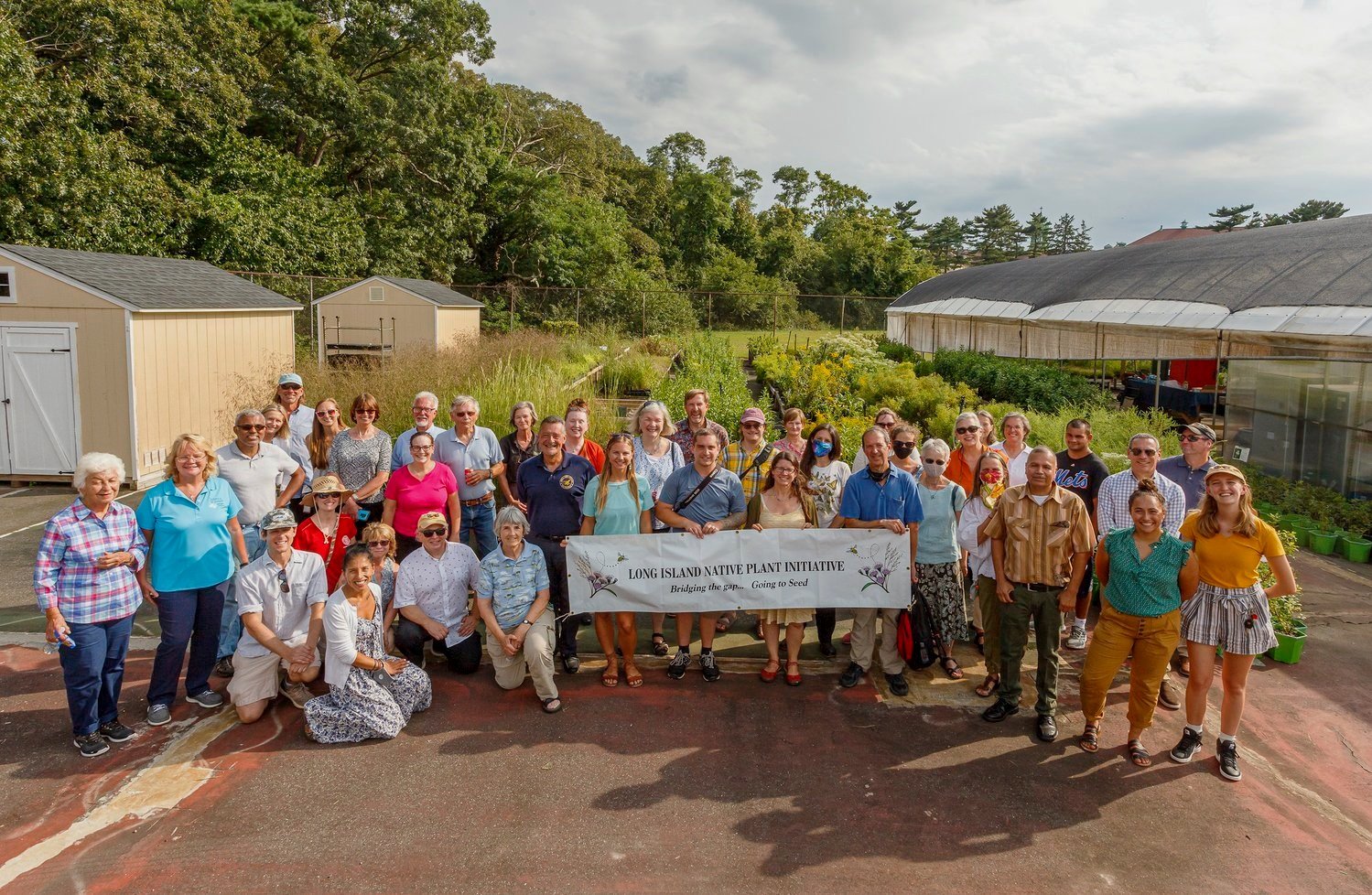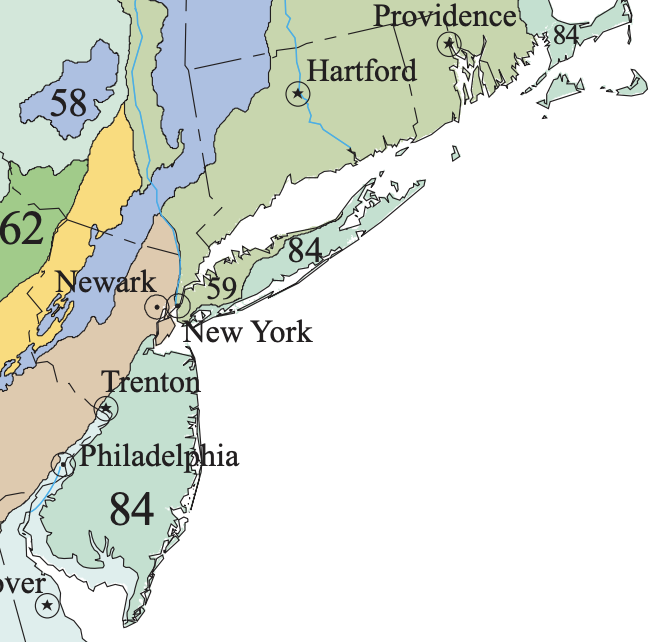
Who We Are
The Long Island Native Plant Initiative (LINPI) is an all-volunteer cooperative effort of over 30 non-profit organizations, governmental agencies, nursery professionals, and citizens.
Mission
LINPI strives to preserve Long Island's biodiversity by cultivating ethically sourced ecotypic plants to ensure commercial availability of native plants for nurseries, communities, and habitat restorations.
We fuel the native plant supply by driving demand through volunteer efforts, education, and outreach programs.
Our Goals
the SOURCE
Establish a commercial source of ecotypic seed for native plant production
SEED BANKING
Contribute to and manage a regional seed bank
Guiding the way
Foster a demand for native plants through education and outreach with the community
“Bridging the gap, by going to seed.”
Polly Weigand | Founder

Why Native Plants?
Native Plants are:
Ecologically beneficial (pollination, food source, shelter)
Promote biodiversity
More resilient than exotic species to disease, climate
Require fewer resources like water, soil amendments, and fertilizer
Ecotypic Natives - How Native is Native?
Long Island’s ecoregion is 59 and 84, shared by parts of NJ, CT, and MA.
Ecotypic natives are organisms native to our ecoregion, as defined by the EPA. Ecoregions are areas where ecosystems (and the type, quality, and quantity of environmental resources are generally similar (source).
Ecotypic native plants are best adapted to our:
Climate - Seasonality, Weather, Temperature
Unique Environmental Stressors - Coastal, Drought, Soils, Fire Tolerance
Most resistant to Pests and Disease
Best Pollination & Food Sources to our indigenous fauna
Best at Competition = Resilient to Invasive Species
Support Symbiotic Relationships with other species
Our Staff
Lead Nursery Manager
Maggie Muzante
Maggie Muzante is the Lead Nursery Manager at the Long Island Native Plant Initiative, bringing 4.5 years of expertise since joining in June 2020. Maggie specializes in seed harvesting, cleaning, storing, and propagation, as well as managing greenhouse and nursery operations, plant sales, and volunteer coordination. A Certified Nursery Landscape Professional, she has also participated in numerous symposiums and conferences. Maggie’s passion for native plants, nature, and the environment drives her contributions to the organization. In her free time, she enjoys going to the beach, nature walks, creating art, and spending time with friends and family.
Nursery Manager
Pam Ireland
Pam Ireland is the Nursery Manager at the Long Island Native Plant Initiative, with over two decades of experience in customer service, sales, and plant care. Pam has 2.5 years at LINPI, six years at Decker’s Nursery & Florist, and three years at Martin Viette Nursery. She brings expertise in seedling care, volunteer coordination, and outreach on native plants. Pam has organized educational seminars and led sales in organics, annuals, perennials, and birding products. Passionate about connecting volunteers to the native plant community, Pam promotes the integration of native plants in landscapes. She enjoys birding and organic gardening.
Board of Directors
President
Greg Lowenthal
Greg has served on the LINPI board for over 4 years, as President since 2023 and Vice President beforehand. He has a BS in Computer Science and Psychology from Stony Brook University, and completed the Master Gardener Volunteer program from CCE Suffolk. While Greg’s career is in enterprise software and technology, he has a passion for gardening, plants, and ecology. He is always looking for ways to improve LINPI including projects, initiatives, and implementing software to help. Greg lives in East Northport with his wife and cats, and enjoys hiking, gaming, travel, and collecting native seed.
Vice President
Rob Longiaru
Rob Longiaru is a Conservation Biologist and Director with the Town of Hempstead and Friends of Hempstead Plains. With 15 years of experience in habitat management, restoration, biological monitoring, and technical environmental reviews, Rob brings a strong background in marine sciences, ecology, and conservation biology to the board. He administers the LIISMA PRISM and is committed to driving long-term policy changes in New York State regarding open space management. In his free time, Rob enjoys gardening, birding, bowling, and playing Wiffle® Ball.
Treasurer
Frances Roth
Frances Roth is the Assistant Director of Business Operations for Campus Residences at Stony Brook University. As Treasurer of LINPI, she combines her passion for nature with expertise in financial stewardship to support the organization's mission. A lifelong nature enthusiast, Frances is dedicated to ensuring resources are managed effectively to drive impactful conservation efforts. Her role helps strengthen LINPI’s financial sustainability, ensuring long-term success in promoting native plants and habitat restoration.
Secretary
Colleen Doyle
Colleen Doyle has 30 years of experience in managing tech departments and running enterprise program management offices for Fortune 100 companies, Colleen brings a wealth of organizational and strategic expertise to her role on the board of LINPI. After recently leaving her corporate career in December, she launched her own landscape design business focused on using native plants in suburban gardens. Colleen’s mission is to help homeowners experience the joy of native plants and the biodiversity they create while minimizing garden maintenance. A passionate native plant gardener for over 20 years and certified in permaculture, she is dedicated to creating sustainable and beautiful landscapes that harmonize with the environment.
Board Member
Mary Pigliacelli
Mary Pigliacelli has been volunteering with the Long Island Native Plant Initiative since 2023 and is currently a board member who focuses on grant writing. Mary is the director of the Writing Center at Long Island University and is a freelance editor and grant writer. She loves working with native plants in LINPIs greenhouses. In her own yard, she is always adding new native plants to create as sustainable and biodiverse a space as possible. When not writing or gardening, Mary loves to read and hike.
Board member
Chris Weisbecker
Chris Weisbecker is the President and Owner of C8W Associates, specializing in commercial and personal insurance, with over 20 years of experience. Chris contributes expertise in finance, insurance review, and hands-on knowledge of infrastructure projects and carpentry to the board. Committed to advancing LINPI’s mission, Chris works to spread awareness of the value of native plants and build connections with like-minded organizations in the region. In his free time, Chris enjoys skiing, snowboarding, hiking, and supporting youth organizations like the BSA Suffolk County Council and Girl Scouts of Suffolk County.
Board Member
Taralynn Reynolds
Taralynn Reynolds is the Outreach Director at the Group for the East End, with over 20 years of experience in habitat restoration, native plants, education, and fundraising. Taralynn is dedicated to educating the public about the importance of native plant species and encouraging municipalities and land managers to source high-quality native seeds and plants from LINPI. Her goal is to establish LINPI as the go-to source for ecotypic seeds on Long Island. In her free time, Taralynn enjoys spending time with her animals, hiking, traveling, gardening, and exploring nature and wildlife.
Founder
Polly Weigand
[email protected], [email protected]
Polly Weigand is the visionary founder of the Long Island Native Plant Initiative, originally established as the Long Island Native Grass Initiative before expanding to include wildflowers and a broader mission of native plant conservation. Her dedication to habitat restoration and ecological sustainability laid the foundation for LINPI’s success. Polly now serves as the Northeast Fire Projects Manager at the Forest Stewards Guild, continuing her work in land stewardship and conservation.














